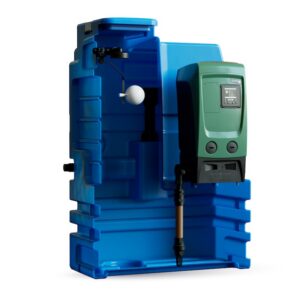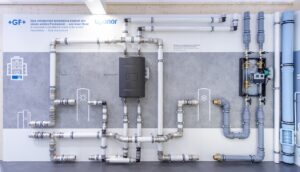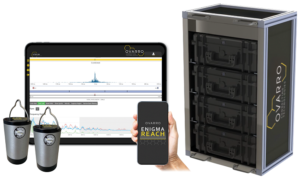Lost Revenue is Biggest Covid Risk Facing Utilities
A bi-weekly webinar from global technology consultancy Isle gives a snapshot of best practices and lessons learnt from utilities and water sector experts around the world as they respond to the coronavirus pandemic, while addressing other key issues facing the industry. Hosted by Isle chairman Dr Piers Clark, the webinars are open to all.
Here is a round-up of key learnings from the sixteenth Water Action Platform webinar, which took place on 6 August.
1. Non-payment is Covid-19’s biggest threat to water
Water utilities are “walking on a knife’s edge”, due to a significant loss of revenue caused by non-payment of water bills during the crisis. A case study from Rolando Hinojosa, chairman of the National Federation of Water & Sanitation Service Co-operatives and presented to the Water Action Platform webinar, highlights that 160 drinking water and sanitation co-operatives in Bolivia are essentially insolvent. This is due to a government instruction to halve customer bills along with non-payment, the webinar learned.
Dr Clark drew attention to a comment from Luke Wilson, deputy director at the Center for Water Security & Cooperation, who said: “Utilities are being forced to take on debt by the government but the people may not be able to repay it and the government may not be able to backstop the utility. We’re walking on a knife’s edge.”
Dr Clark suggested three steps to move forward: “Firstly, we must openly and honestly acknowledge the situation so we can start a dialogue. Secondly, we should embrace the digital revolution. A number of sources have identified that one of the key positive impacts of Covid-19 will be a greater shift to digital. This could be transformational for the water sector. We’ve known for years that if we use our data more intelligently, we could make more informed capital and operational decisions but it’s difficult moving legacy systems to a new digital way of working. Perhaps Covid-19 will provide the impetus we need. Finally, is the role new technology. As a sector we are not short of new technology, however, the industry is often described as being slow to adopt.”
With this in mind the next Water Action Platform webinar will have a particular focus on technology and will provide a summary of highlights from Isle’s recent Covid-19 technology scan.
2. Football is helping raise awareness of the global water crisis
Manchester City football club has teamed up with technology provider Xylem to create a film drawing attention to the reality that the world is running out of water. While water professionals will be only too familiar with stark predictions – including that by 2045 we may not have enough water to meet our needs – how does the sector get the world to notice? By pointing out the threat and relating it to something we are united around, Dr Clark told the webinar. The film, The End of Football, highlights that if complacency around water continues, the world is one generation away from water scarcity touching every aspect of our lives.
Dr Clark said: “Interestingly, the film was made before the pandemic occurred, and before Covid-19 actually stopped football matches happening. The coronavirus has shown us just how fragile the world and its favourite sport really is.”
3. Domestic development spending to fall by US$396 billion
Low and middle-income countries will have $396 billion less than projected for public spending on development from 2020-21, a report presented to the Water Action Platform webinar estimates. The research from WaterAid and End Water Poverty also predicts that lower income countries will receive $27 billion less if donors maintain their current levels of funding relative to gross domestic product. Recommendations include raising the level of aid from governments of higher income countries from 0.7% of gross national income to 1%.
Research from Stockholm International Water Institute and Unicef into the impact of Covid-19 on water sanitation hygiene (WASH) services were also presented. The organisations have mapped WASH activities in Latin America to look at what has changed since the pandemic took hold. It concludes that as governments’ priorities shift to economic revival, access to WASH services risks getting lost in the discussions.
4. Infected passengers on planes and cruise ships could be pinpointed
CSIRO, Australia’s national science research agency, believes it has cost effective, rapid and accurate system for detecting the virus through wastewater-based epidemiology (WBE). The Water Action Platform webinar heard that researchers claim they can pinpoint infected passengers on planes and cruise ships, building on a proof of concept trial run in Brisbane by CSIRO and the University of Queensland.
New WBE research from KWR Water Research Institute in the Netherlands, one of the first organisations to launch a sewage surveillance programme, was also presented. Graphs from 29 July show a correlation with the number of registered cases with the Dutch Municipal Health Services and the number of hospital admissions. The sewage water curve ‘reacts’ about a week before hospital admission. This research again highlights that sewers can be used as an early warning system.
5. South Africa launches WBE programme
Two sector experts from the Water Research Commission of South Africa, shared details of South Africa’s recently launched national wastewater based epidemiology (WBE) programme for Covid-19. Jay Bhagwan, executive manager and Dr Nonhlanhla Kalebalia, research manager, gave overviews of the programme and the three-phrased approach it is taking to scale up the initiative across the country.
The first phase, a proof of concept, is already underway, to be followed by a large-scale pilot, which will be scaled up in phase three.
Dr Clark said: “South Africa already had a WBE and contact tracing programme in place to monitor other viruses, Ebola and polio. Perhaps their drought experience, coupled with pre-existence of WBE programmes, helps explain why the Covid-19 case numbers stand at half a million in South Africa but the deaths are only 8,000.”
6. Low energy freeze-dry technology could revolutionise sludge dewatering
A new technology that uses a freeze-drying process to dewater and dry sludges was presented during the Water Action Platform webinar’s technology showcase.
Developed by Swedish company Elajo, the freeze dry unit works with any sludge or slurry with high water content and is based on advanced temperature control. Elajo claims the process is energy efficient, operating at one-tenth of the usual energy consumption, and does not use chemicals.
Dr Clark said: “There are already many technologies for drying sludge to a higher dry solids content but these are typically high temperature processes that use a lot of energy. The trick that Elajo uses is to incorporate a low temperature sludge freezing stage. This frees the water trapped in the sludge solids, making it easier to evaporate in a subsequent high temperature stage. The mechanism used to cool the sludge generates waste heat, much like your refrigerator does. In the freeze dry process, the waste heat is captured and reused in the later high temperate step, which is key to their energy efficiency.
“This could potentially replace a number of processes typically deployed in a wastewater treatment works.”
Taking part
The next webinar takes place twice on Thursday 20 August and is open to utilities, organisations and companies across the water sector. There are two time slots to accommodate time differences - 7:30am and 4:30 pm BST (UTC+1).
Source: Isle Utilities







